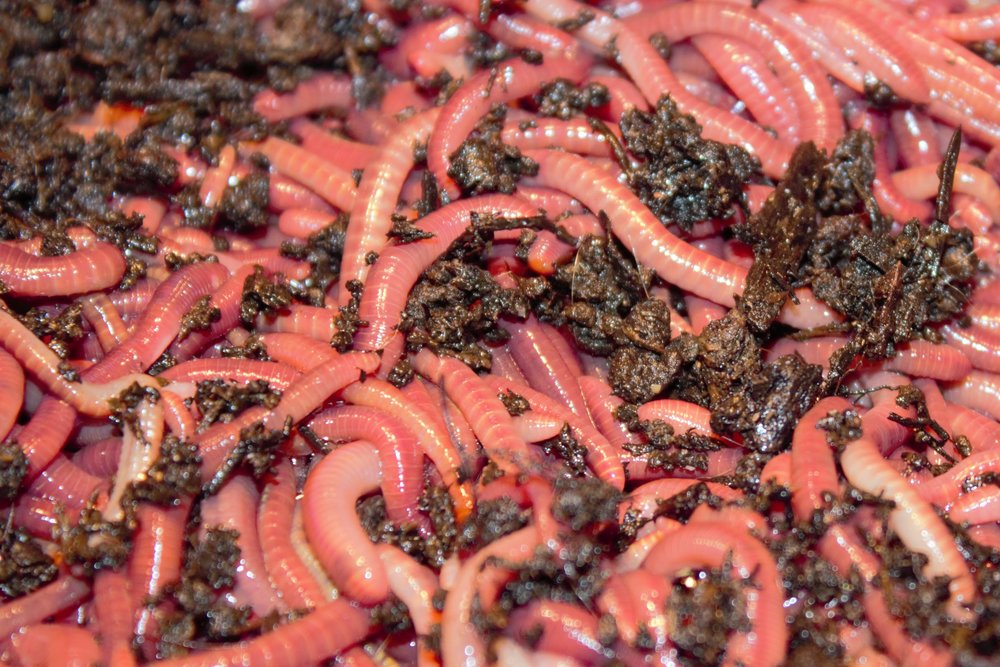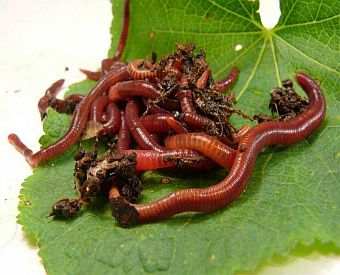Happy red wigglers: How to find them
The Duty of Red Wigglers in Lasting Gardening
The integration of red wigglers right into sustainable gardening techniques provides a compelling strategy to improving soil wellness and minimizing natural waste. These microorganisms not just transform kitchen scraps right into nutrient-dense compost through vermicomposting however also freshen the soil, advertising ideal conditions for plant growth. As they damage down complex natural materials, they actively cultivate a growing microbial ecological community necessary for sustainable agriculture. Nonetheless, the ramifications of utilizing red wigglers expand beyond plain composting; their function in forming an extra lasting future warrants a much deeper expedition of their advantages and sensible applications.
Recognizing Red Wigglers
Red wigglers, scientifically called Eisenia fetida, are a species of earthworm renowned for their duty in sustainable horticulture and composting techniques - red wigglers. These worms flourish in decaying natural matter, making them particularly reliable in converting cooking area scraps and lawn waste into nutrient-rich garden compost. Unlike typical earthworms, red wigglers have a higher tolerance for varying moisture levels and can grow in settings with bountiful natural product
(red worms for composting)Characteristically, red wigglers are smaller sized than their earthworm counterparts, generally determining between 3 to 4 inches in size. They possess a reddish-brown pigmentation and have a segmented body framework that helps in their burrowing and feeding tasks. These organisms are hermaphroditic, meaning each specific possesses both male and women reproductive organs, which permits for effective populace growth under optimum conditions.
The environment preferences of red wigglers include damp, dark settings rich in organic web content, such as compost containers or worm farms. Their environmental role prolongs past composting; they are essential in freshening the soil and promoting nutrient biking, which ultimately adds to much healthier garden environments. red wigglers. Understanding the biology and habits of red wigglers is essential for those seeking to apply effective vermicomposting in sustainable horticulture
Advantages of Vermicomposting
Vermicomposting offers many benefits that enhance sustainable horticulture techniques and contribute to environmental health and wellness. Among the primary benefits is the improvement of natural waste right into nutrient-rich compost, which enhances dirt framework and fertility. The spreadings generated by red wigglers are packed with useful microbes and essential nutrients, making them an outstanding natural plant food.
In addition, vermicomposting significantly decreases garbage dump waste. By diverting kitchen area scraps and backyard waste from land fills, this technique not just minimizes methane emissions-- a potent greenhouse gas-- but also promotes a circular economic situation, where waste is repurposed as a source.
An additional benefit is the improvement of dirt oygenation and water drainage (red wigglers). The burrowing task of red wigglers develops networks in the dirt, enabling air and water to permeate more easily, thus fostering a healthier root system for plants
Moreover, vermicomposting can be done on a tiny range, making it obtainable for city garden enthusiasts and those with restricted area. This method encourages ecological stewardship and recognition, as people end up being much more engaged with their waste management techniques. Inevitably, vermicomposting stands for a sustainable, efficient, and eco-friendly approach to horticulture that profits both plants and the planet.
How to Beginning Vermicomposting
Starting your own vermicomposting system can be a rewarding undertaking that improves your sustainable horticulture methods. To begin, pick a proper container, such as a plastic bin or wood box, with great drainage and air flow. The size will certainly depend upon the volume of cooking area scraps you produce; a bin of 10-14 gallons commonly is sufficient for a home.
Following, prepare the bed linen product. Shredded newspaper, cardboard, and coconut coir are excellent choices, offering a comfy environment for the red wigglers. Go for a bed linens depth of concerning 4-6 inches, which ought to be wet but not soaked.
Once the bed linens is established, present your worms. Red wigglers (Eisenia fetida) are the most appropriate for composting. Beginning with around one extra pound of worms for every single 2-3 extra pounds of kitchen area scraps weekly.
Begin including kitchen area waste, preventing meat, dairy, and oily foods, as these can bring in insects and develop odors. On a regular basis keep track of the container's moisture levels and temperature level, ensuring it continues to be within the perfect variety for worm task. With these initial steps, you'll be well on your means to creating nutrient-rich compost for your yard.
Keeping a Healthy Worm Bin
A prospering worm container requires constant treatment and focus to maintain an optimal atmosphere for the red wigglers. Trick factors to keep track of consist of dampness degrees, temperature level, and food supply. Maintaining a wetness level comparable to a wrung-out sponge is critical; excessive water can result in anaerobic problems, while inadequate can dry out the worms.
Temperature level is additionally crucial, as red wigglers flourish in a variety of 55 to 77 degrees Fahrenheit. Severe temperature levels can worry the worms, possibly bring about death. Consequently, placing the container in a climate-controlled location or making use of shielding products can aid manage temperature level variations.

Lastly, oygenation is important. Routinely transforming the my link bed linen and using a fork or shovel can protect against compaction and advertise air flow, ensuring a healthy and balanced, flourishing setting for the red wigglers. By adhering to these techniques, gardeners can maintain an efficient worm bin that supports lasting horticulture initiatives.
Influence On Dirt Health And Wellness
Enhancing dirt health and wellness via the use of red wigglers is a basic aspect of lasting gardening. These worms, understood medically as Eisenia fetida, play a vital role in enhancing dirt structure and fertility. By taking in organic issue, red wigglers damage down complex products into easier substances, a process referred to as vermicomposting. Completion product, worm castings, is abundant in essential nutrients, including nitrogen, phosphorus, and potassium, which are crucial for plant growth.

(redworms for composting)Research studies have actually shown that soils enhanced with worm spreadings show enhanced microbial activity and boosted fertility, leading to higher crop yields. By including red wigglers right into gardening practices, gardeners not only enhance their dirt yet also add to a more sustainable farming system, stressing the interconnectedness of dirt wellness and environmental stewardship.

Verdict
In verdict, red wigglers dramatically add to lasting horticulture with their efficient vermicomposting techniques. Their ability to transform natural waste right into nutrient-rich compost enhances soil fertility and sustains a varied microbial environment. Moreover, their burrowing activity improves dirt oygenation and water retention, profiting plant health and wellness. By advertising waste reduction and fostering a round economic situation, red wigglers emerge as vital components in eco-friendly horticulture efforts, underscoring their vital duty in environmental sustainability.